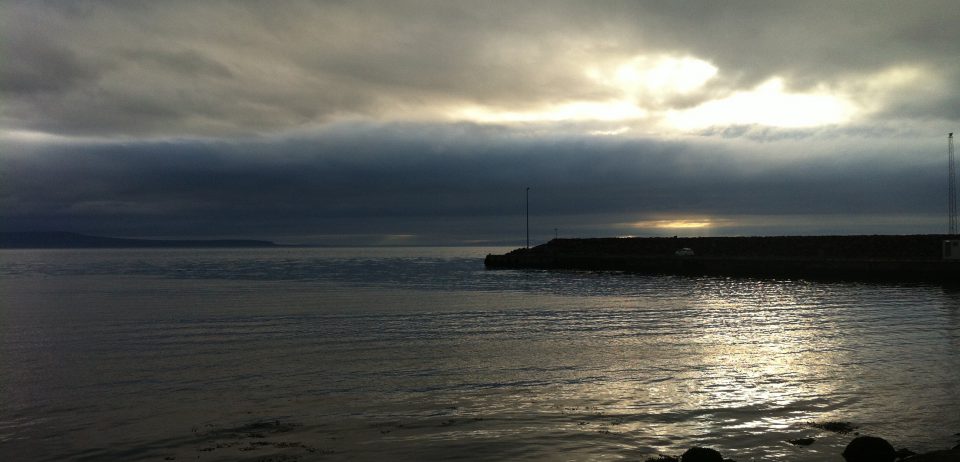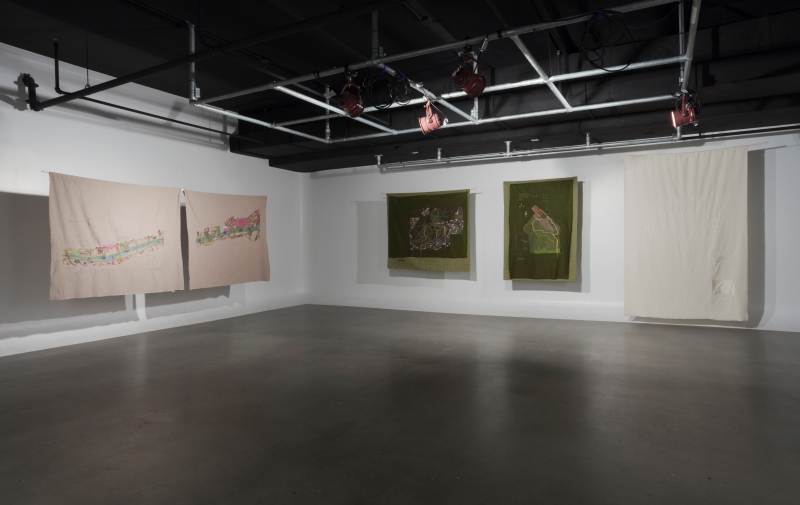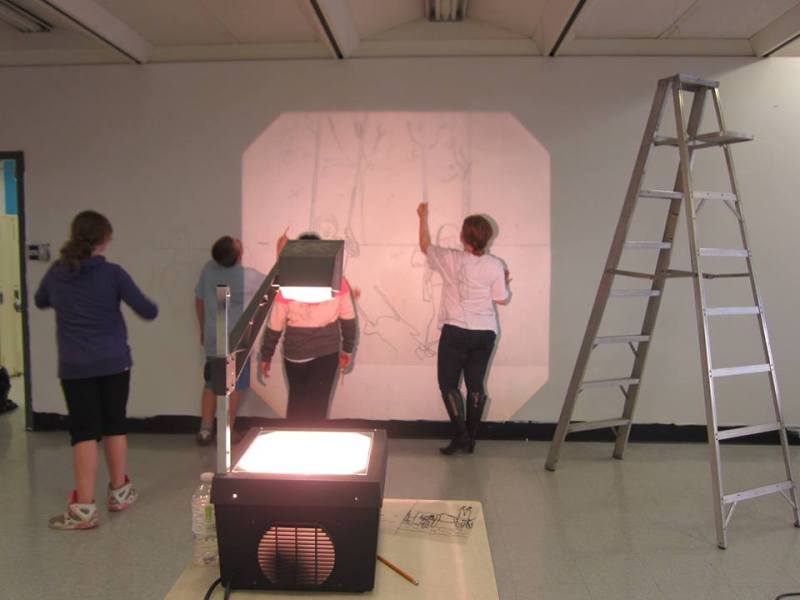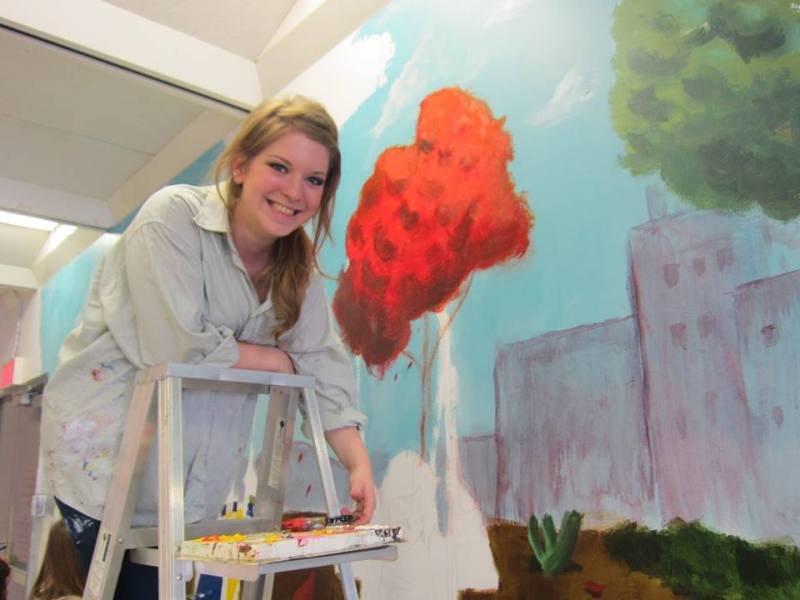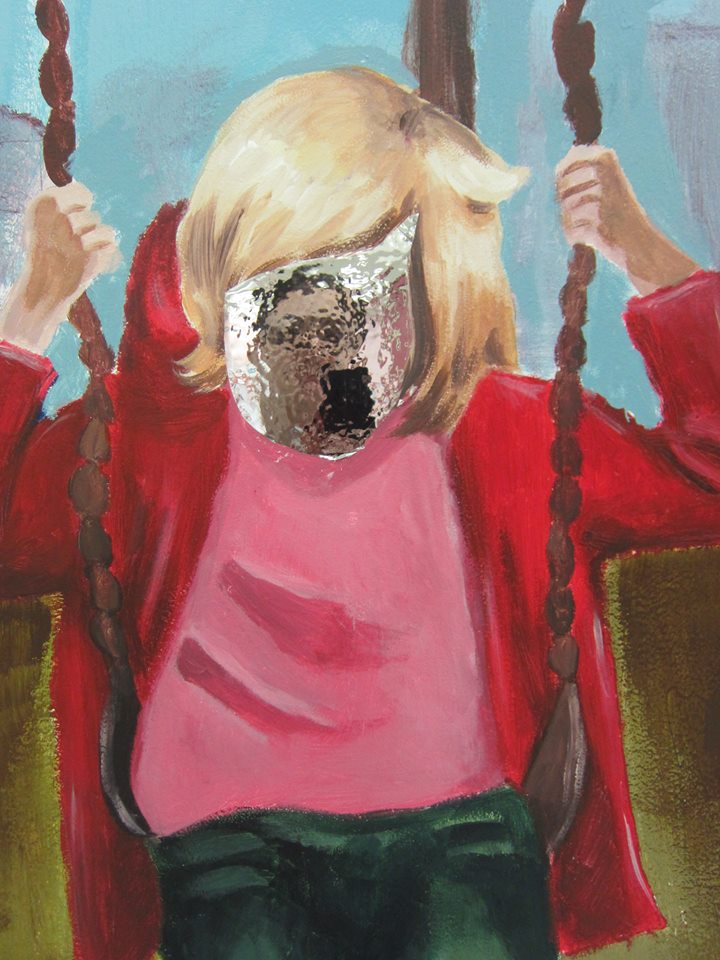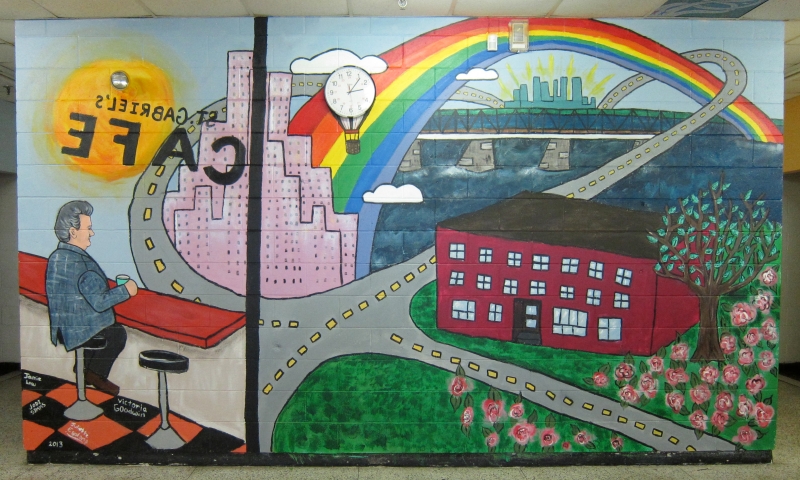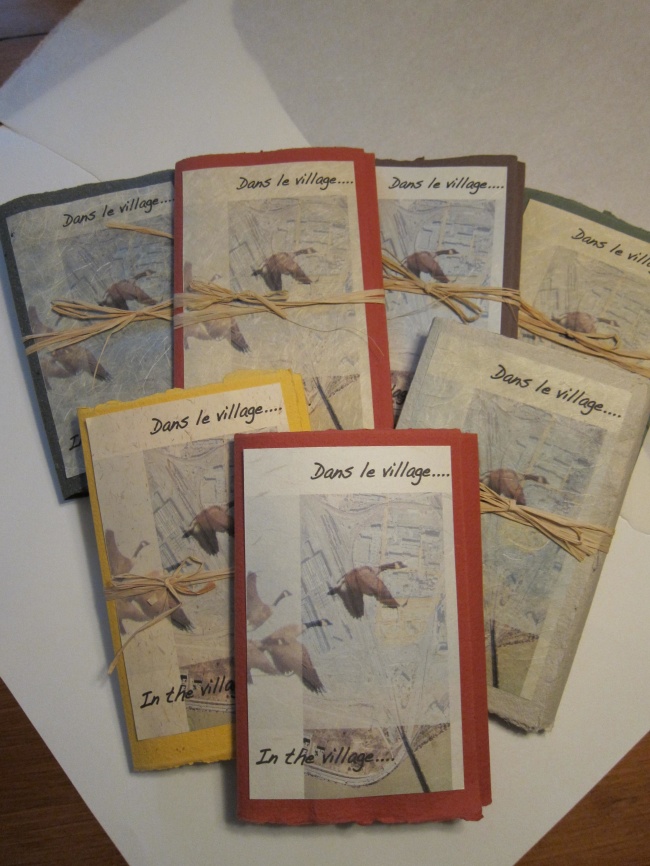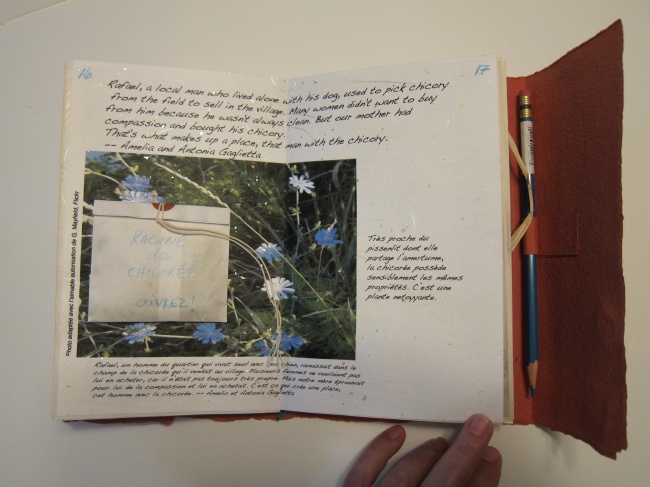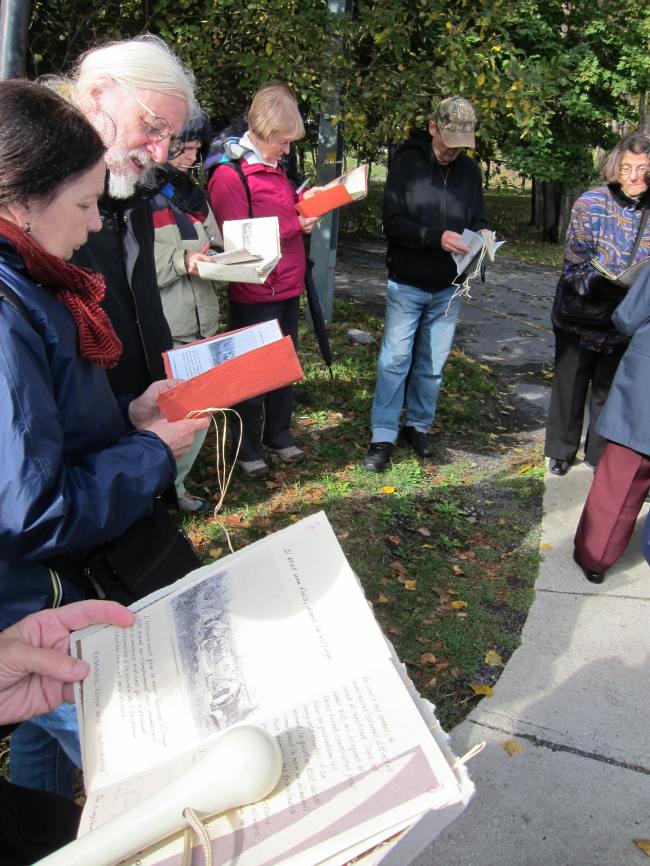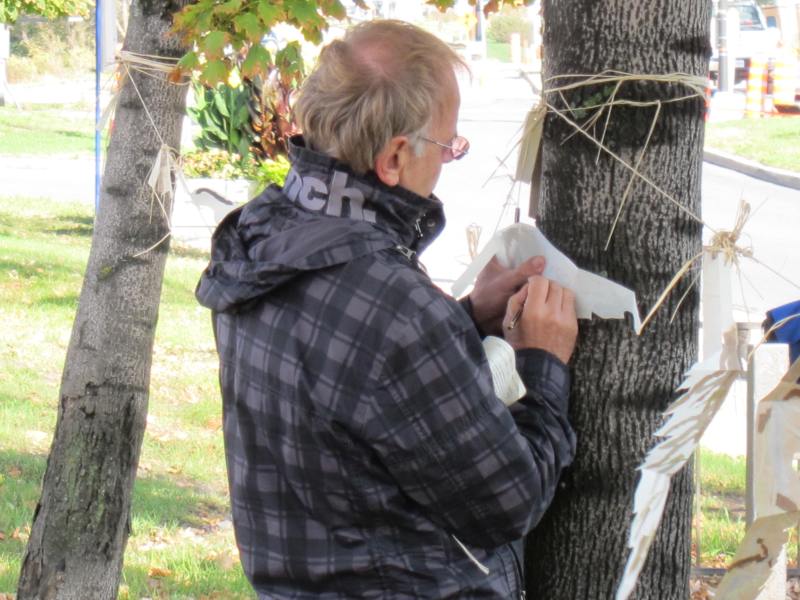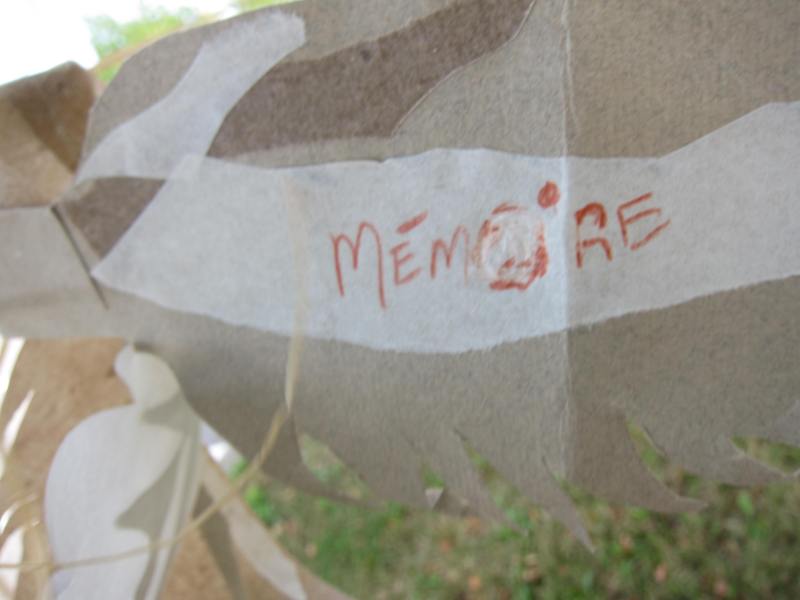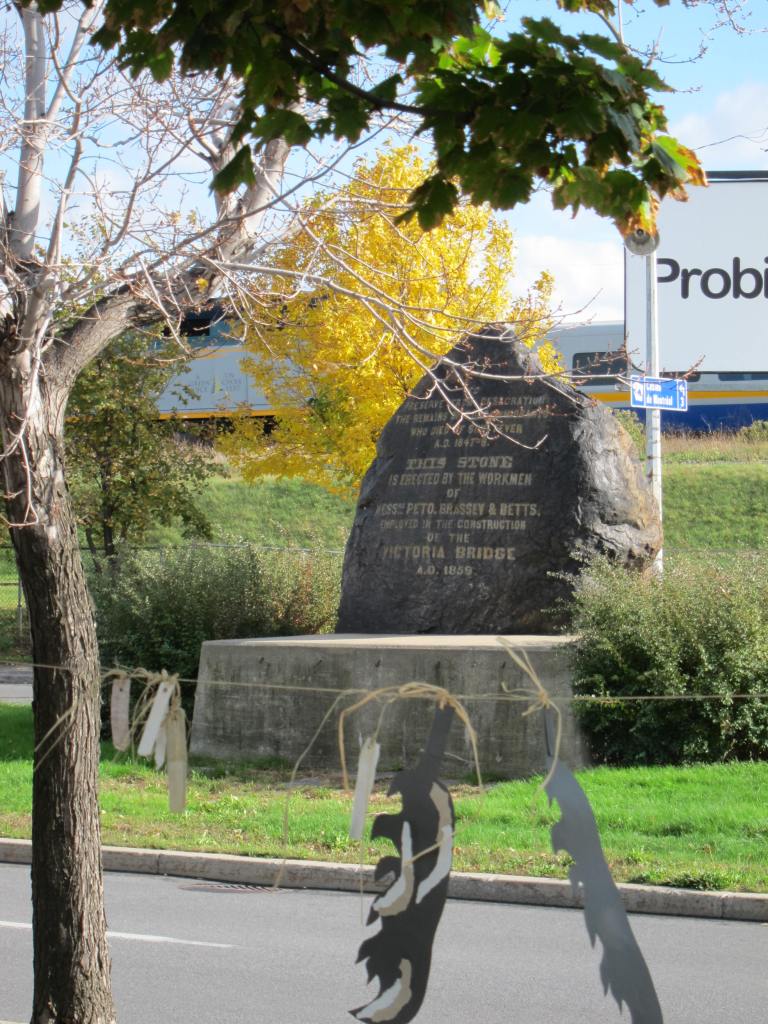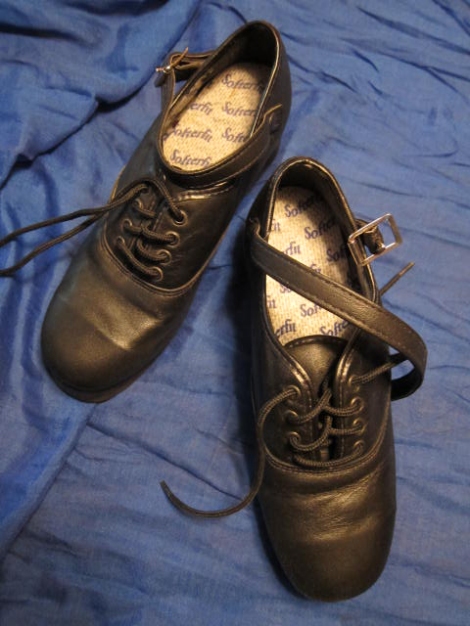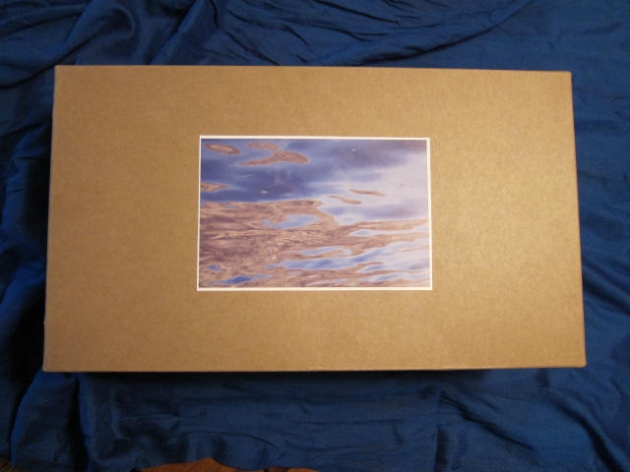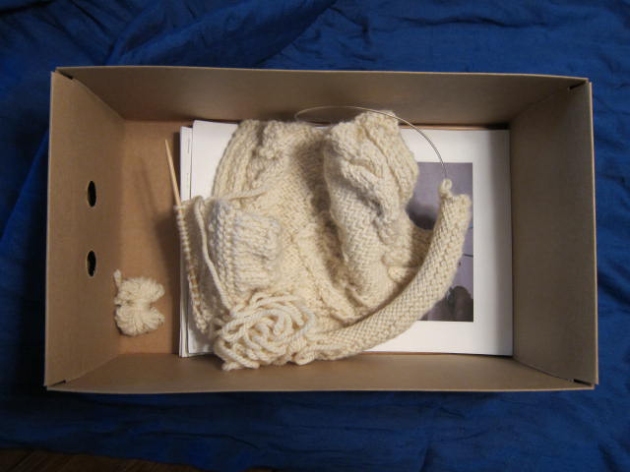Nel mezzo del cammin (2012 – ) • A series of textile maps of walks in urban woods and greenspaces
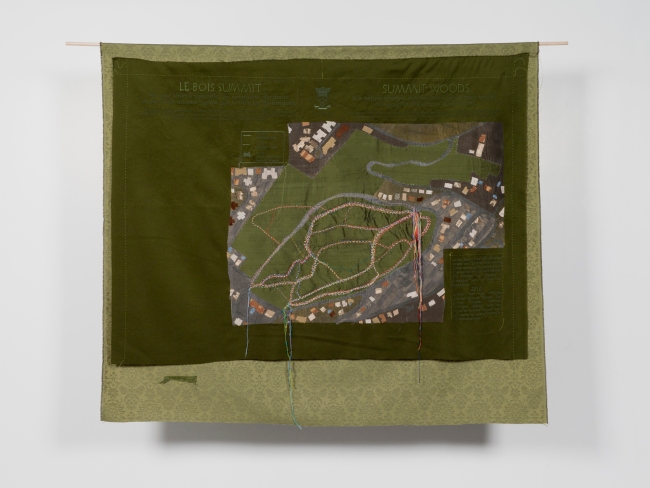
Nel mezzo del cammin: Summit Woods, textile assemblage and embroidery floss on wool/cashmere coat weight fabric, 44 in H x 60 in W
Nel mezzo del cammin uses digital and hand-worked textile practices to represent the pleasures and political ecology of walking in urban woods, specifically four terrains in the Montreal area. Like much of my recent work, Nel mezzo del cammin takes the form of mapping and explores walking as a knowledge practice and artist’s method. Remembering that maps represent particular versions of place – replete with questions of ownership and access – at very specific moments of history, I work into the gap between the authoritative bird’s eye view and the lived experience of a place over time: my maps use digital embroidery processes to version ‘official’ portions of a map – surveyed contours, texts, and labels in both French and English – and hand-stitching to record multiple trajectories of walks taken over time. This series takes its title from the opening lines of Dante’s Inferno in its original Italian, and so also addresses questions of naming and translation, with a nod towards the language politics of Quebec. The Inferno begins with a walk in a dark wood and takes up questions of humanity and ethical relations, which have their resonance in the environmental concerns embedded in my works. Referencing and de-familiarizing the comfortable ‘hominess’ of textiles and the long work of stitching and piecing, my maps suggest that the process of emplacing oneself is incremental and on-going, step by step, stitch by stitch. I began this series upon relocating to my native Montreal after 20 years of life in Toronto. My collaborator in this project is my dog, Baloo, who accompanies me on my meanderings.
Nel mezzo del cammin: Summit Woods (44 inches high by 60 inches wide) explores the specifics of the small bird sanctuary atop Westmount. Into my map I stitch the perambulations of a month’s worth of outings, with 31 different colours tracing the particular route I took on each occasion. If I move briskly, I could cover all my preferred paths on foot in about an hour, but re-tracing my steps in embroidery floss took me longer.

A closer detail, showing the variety of surface treatment, from hand stitching, to digital embroidery, to pieced material
Nel Mezzo del Cammin: Arboretum Morgan Arboretum: 30 Walks (60 inches high by 40 inches wide) takes us to a much larger and wilder forested reserve, portrayed using a mix of patterns to designate specific identified landforms: knolls, ponds, fields, paths and other features. I work with fabrics that I have found, purchased, and solicited from others who know this space and or walk with me here, a reference to the traditions of collaboration in textile practices. The yellow of the stitching references the unseasonable warmth of October 2013, when the foliage stayed gold for so long, barely deepening to red before the leaves fell and our long winter descended.
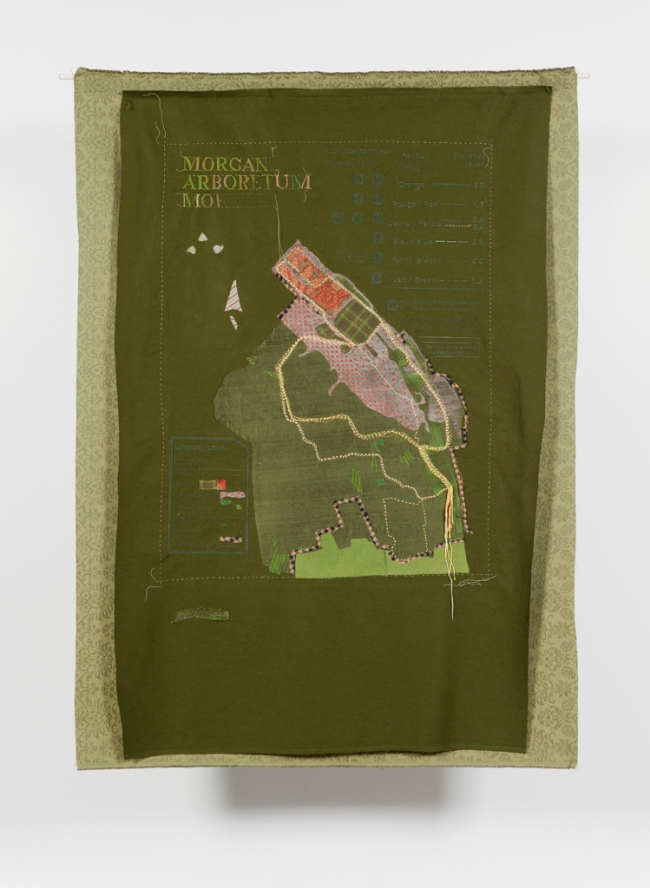
Nel mezzo del cammin: Morgan Arboretum, textile assemblage and embroidery floss, 60 in H x 40 in W
The yellow tones of the stitching reference the lingering golds of the Arbo’s trees during the glorious October of 2013.
Wall sized, the maps have real presence when installed – as I found out when I recently hung the works together in a Concordia studio. Seeing them for the first time on (or, actually, hanging slightly off) the wall, gave me great pleasure. The two completed green maps are flanked by the two final works in the series, still underway. Angell Woods (in ivory tones, on the right) explores a terrain in Beaconsfield, an upscale suburban community of Montreal’s West Island. An unofficial park that in fact made up of contested patchwork ownerships and zoning, Angell Woods is one of the few undeveloped stretches of land in the area and much beloved by dog walkers – especially during the dryer, bug-free cooler seasons. Also wonderful in the winter is the urban greenspace of the Lachine Canal, a 22-kilometre long linear park that stretches the length of the waterway westward from Montreal’s Old Port out towards Dorval. In the warm weather, an extremely popular bike path races along the water’s edge, given wheeled vehicles a certain precedence. A beaten ash path allows walkers (two- and four-footed) a separate place to tread. But when the snow and ice settles in, bikes have no passage, and dogs can run off leash. Such a pleasure!
In addition to engaging with issues of political ecology, Nel mezzo del camin: Lachine Canal takes up questions of gentrification, urban planning and neighbourhood building, with new development in adjacent streets marked in pink organza. The stitching work – tracing Baloo’s wheeling, free trajectories at my side – is yet to be done.
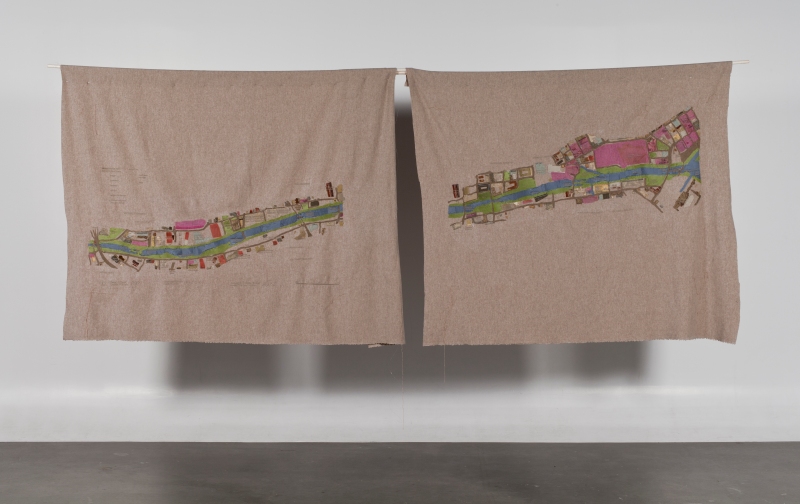
The two panels of Nel mezzo del cammin mimic the two PDFs posted online by Parks Canada, spanning the distance from the de l’Eglise Bridge on the Verdun side to the Old Port. Both maps include the Atwater Market, a neighbourhood hub.

This portion of the map depicts Griffintown, the community on the north side of the Canal that is experiencing rampant condominium development – new building is marked in pink. Tomato red marks sites that are ‘for rent/à louer’, often a prelude to a process of change. Machine stitching identifies the genealogy of buildings that have been or are experiencing transformation – industrial and commercial names followed by development names.
